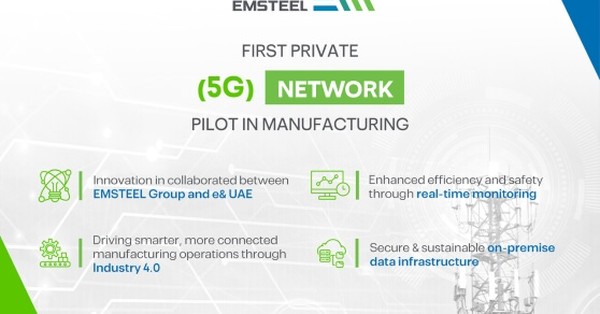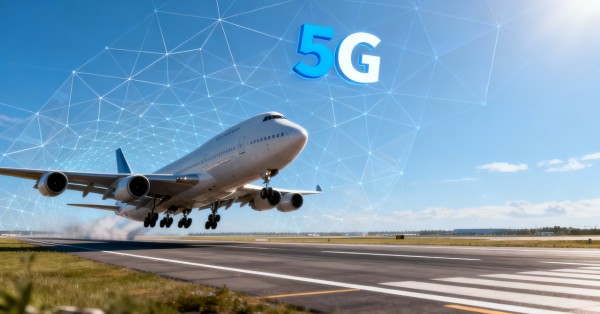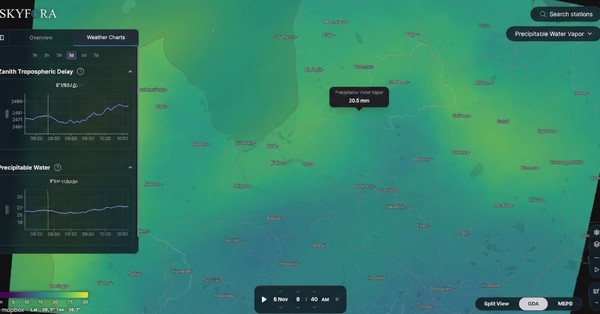Innovation at the Edge: How Private Networks and AI are Shaping the Future – A GXC Q&A Session with Experts from PwC
In today’s rapidly evolving technological landscape, private networks and artificial intelligence (AI) are revolutionizing industries. To delve deeper into this transformative impact, Allen Proithis, CEO of GXC, sat down with Patrick Parodi and Harish Nalinakshan from PwC to discuss the nuances of digital transformation, the pivotal role of connectivity, and the future of hybrid networks. Below Q&A session highlights how AI and private networks are reshaping the future.
The Impact of Private Networks and AI on Modern Industries
Q: Can you start by explaining the significance of private cellular networks in today’s industries?
Patrick Parodi: Private cellular networks are becoming a game changer for industries that require robust and secure communication systems, such as oil and gas, mining, and utilities. These networks enable extensive automation and operational efficiencies, particularly in large ports, warehouses, and logistics centers. By providing a secure and reliable communication infrastructure, private networks facilitate the automation of various processes, leading to enhanced productivity and efficiency.
Harish Nalinakshan: Exactly. These industries have traditionally relied on high privacy and operational efficiency levels. Private networks allow them to automate many tasks that were previously manual, thus improving overall operational efficiency. The ability to have a dedicated network ensures that critical communications are not disrupted, which is essential for maintaining safety and efficiency in these sectors.
Q: How does PwC contribute to digital transformation in these industries?
Harish Nalinakshan: At PwC, our role in digital transformation involves leveraging emerging technologies to solve critical problems and build trust in society. We combine digital innovations with traditional operations to enhance operational AI, improve safety and efficiency, and deliver better business outcomes. Our approach emphasizes the importance of unlocking data silos and integrating AI and machine learning (ML) to reveal hidden insights and correlations.
Patrick Parodi: We have a team dedicated to Connected Solutions, where we work with an ecosystem of technology companies to orchestrate, deploy, and manage solutions that provide the right business outcomes. For example, we’ve developed an enterprise-level contact tracing solution during COVID-19 and implemented various connectivity solutions in large hospitals and hospitality environments. Our goal is to leverage any connectivity solution, be it private wireless, LPWAN, or other technologies, to drive digital transformation and operational improvements for our clients.
Integrating AI with Private Networks for Enhanced Digital Transformation
Q: What role does AI play in this digital transformation, and how does it integrate with private networks?
Patrick Parodi: AI is crucial in the digital transformation journey. It allows us to analyze vast amounts of data from various sources and extract valuable insights. For instance, in operational environments, AI can predict equipment failures, optimize maintenance schedules, and improve overall efficiency by analyzing patterns and detecting anomalies. When integrated with private networks, AI can provide real-time data analysis and insights, enabling businesses to make informed decisions quickly.
Harish Nalinakshan: AI also helps bridge the gap between physical and digital operations, a concept we refer to as “digital” transformation. By using private wireless and other connectivity solutions, we can collect data from physical assets, analyze it in real time, and use AI to provide actionable insights. This integration helps organizations optimize their operations, reduce risks, and improve overall efficiency.
Q: Security is a major concern in today’s connected world. How do private networks and AI address these security challenges?
Harish Nalinakshan: As more devices and operations become digitized, robust security measures are paramount. Private networks provide a more secure communication infrastructure compared to public networks, reducing the risk of data breaches. Additionally, AI can help monitor network traffic, detect unusual patterns, and identify potential security threats in real-time.
Patrick Parodi: Security is indeed critical, especially as operations rely more on automated decision-making systems. The data pipeline, from sensors to analytics, needs to be protected to ensure the integrity and efficiency of connected operations. Private networks offer a controlled environment where security measures can be more effectively implemented, thus protecting sensitive data and critical communications.
Addressing Security Concerns with Private Networks and AI
Q: What are the biggest challenges and opportunities with integrating AI into business operations?
Patrick Parodi: One of the biggest challenges is dealing with data silos. Many organizations already have valuable data, but it’s often locked away in separate systems. Integrating and analyzing this data using AI and ML can reveal previously hidden insights, leading to more informed decision-making and operational improvements. Starting with specific use cases, such as temperature monitoring in refrigeration, can help demonstrate the tangible benefits of AI and build confidence in its broader application.
Harish Nalinakshan: Another challenge is ensuring that AI systems are integrated seamlessly with existing operations. This requires a clear strategy and understanding of how AI can be used to solve specific problems. The opportunities, however, are immense. AI can transform operations by predicting equipment failures, optimizing processes, and providing real-time insights that improve efficiency and reduce costs. Businesses can gradually scale up their AI initiatives and achieve significant operational improvements by starting small and focusing on specific use cases.
Challenges and Opportunities in Private Networks and AI Integration for Business Operations
Q: What do you see as the future trends for private and hybrid networks and their integration with AI?
Harish Nalinakshan: We anticipate increased adoption of private and hybrid cellular communications. These networks offer the flexibility to meet specific industry needs, combining the best of both private and public network capabilities. This trend will accelerate digital transformation across traditional sectors, enabling them to leverage the benefits of advanced connectivity and data analytics.
Patrick Parodi: The future also holds exciting prospects for operational AI. As AI and ML technologies continue to evolve, we will see more sophisticated applications that can automate decision-making processes and optimize operations in real-time. The shift towards edge computing and on-premises models will also play a significant role, enabling faster data processing and analysis at the source.
Future Trends in AI and Hybrid Networks
Q: Can you provide some insights into the potential advancements in AI and private networks over the next few years?
Harish Nalinakshan: We will see significant advancements in generative AI and its applications across various industries. The ability to query large datasets and enforce closed-loop control systems will become more commonplace, driving efficiency and innovation. Combining private and public cellular networks, hybrid network solutions will also become more prevalent, providing the flexibility and reliability needed for complex operations.
Patrick Parodi: Additionally, the integration of AI with private networks will lead to more automated and efficient operations. We’ll see more real-time data analysis and insights, enabling businesses to make quicker and more informed decisions. The combination of AI and advanced connectivity solutions will drive significant improvements in operational efficiency, safety, and overall business outcomes.
Anticipated Advancements in AI and Private Networks
The integration of private networks and AI is transforming industries by enhancing connectivity, operational efficiency, and security. As digital transformation continues to evolve, the adoption of advanced technologies will drive significant improvements in how businesses operate and deliver value. By starting small and focusing on specific use cases, organizations can harness the power of AI and private networks to unlock new opportunities and achieve greater efficiency and innovation.







































